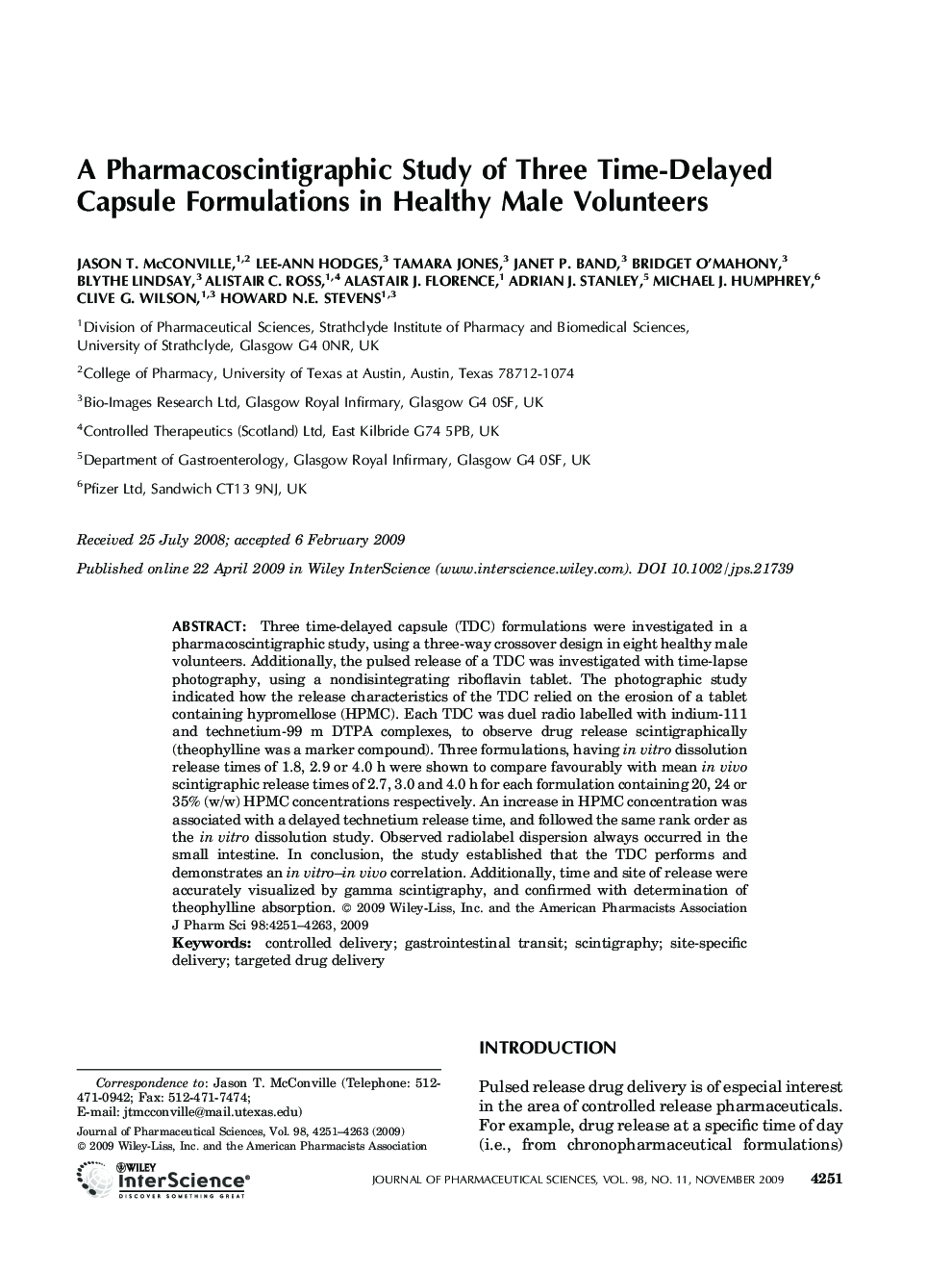| Article ID | Journal | Published Year | Pages | File Type |
|---|---|---|---|---|
| 2486956 | Journal of Pharmaceutical Sciences | 2009 | 13 Pages |
Abstract
Three time-delayed capsule (TDC) formulations were investigated in a pharmacoscintigraphic study, using a three-way crossover design in eight healthy male volunteers. Additionally, the pulsed release of a TDC was investigated with time-lapse photography, using a nondisintegrating riboflavin tablet. The photographic study indicated how the release characteristics of the TDC relied on the erosion of a tablet containing hypromellose (HPMC). Each TDC was duel radio labelled with indium-111 and technetium-99Â m DTPA complexes, to observe drug release scintigraphically (theophylline was a marker compound). Three formulations, having in vitro dissolution release times of 1.8, 2.9 or 4.0Â h were shown to compare favourably with mean in vivo scintigraphic release times of 2.7, 3.0 and 4.0Â h for each formulation containing 20, 24 or 35% (w/w) HPMC concentrations respectively. An increase in HPMC concentration was associated with a delayed technetium release time, and followed the same rank order as the in vitro dissolution study. Observed radiolabel dispersion always occurred in the small intestine. In conclusion, the study established that the TDC performs and demonstrates an in vitro-in vivo correlation. Additionally, time and site of release were accurately visualized by gamma scintigraphy, and confirmed with determination of theophylline absorption. © 2009 Wiley-Liss, Inc. and the American Pharmacists Association J Pharm Sci 98:4251-4263, 2009
Keywords
Related Topics
Health Sciences
Pharmacology, Toxicology and Pharmaceutical Science
Drug Discovery
Authors
Jason T. McConville, Lee-Ann Hodges, Tamara Jones, Janet P. Band, Bridget O'Mahony, Blythe Lindsay, Alistair C. Ross, Alastair J. Florence, Adrian J. Stanley, Michael J. Humphrey, Clive G. Wilson, Howard N.E. Stevens,
